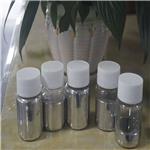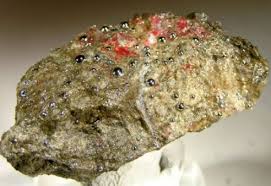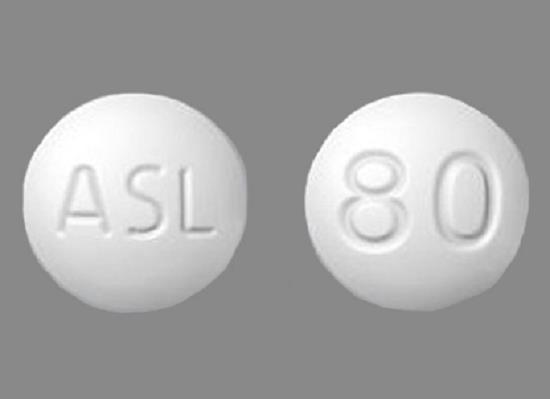Mercury: Applications, metabolism and toxicity
General description
Mercury (Hg) is a metal that exists in the liquid state at room temperature. In addition to its metallic state, mercury occurs in compounds as monovalent mercurous mercury and divalent mercuric mercury. Mercury also exists in nature as organometallic compounds in which mercury is covalently bound to carbon, in compounds of the type RHg+ and RHgR’, where R and R’ represent the organic moiety. The carbon-mercury bond is chemically stable because of the low affinity of mercury for oxygen. The affinity of mercury for sulfur and thiol (sulfhydryl, SH-) groups is a major factor underlying the biochemical properties of mercury and mercury com- pounds. The mercury-containing moiety binds to thiol groups in membrane proteins and enzymes, thereby interfering with membrane structure and function and with enzyme activity. The toxicological properties of the different forms of mercury (Hg) in mammalian organisms are largely a function of the complex binding interactions that occur between mercuric ions and various protein and nonprotein thiols in the extracellular and intracellular compartments of target cells. Its appearance is as follows:

Figure 1 Appearance of Mercury
Applications
According to the U.S. Geological Survey, only approximately 20 metric tons of mercury are now consumed annually domestically in the United States. Recent estimates indicate that of this amount approximately 50% is used for chlorine-caustic soda manufacture and the remaining 50% for dental amalgams, mercury electronic switches, and fluorescent lamps and other electronic devices. The uses have changed dramatically over time. In the mid-1970s, of the mercury produced yearly for commercial purposes, 25% was consumed by the chloralkali industry, 20% was used in electrical equipment, 15% in paints, 10% in measurement and control systems (e.g. thermometers and sphygmomanometers), 5% in agriculture, 3% in dentistry, and 2% in laboratories. The remaining 20% was divided among military uses, such as in detonators, and uses in mercury-containing catalysts, preservatives in the paper-pulp industry, pharmaceuticals, cosmetic preparations, and others [1].
Metabolism
It has been shown in mice and in primates [2] that 10 times more mercury is retained in the brain after a single exposure to mercury vapor than after intravenous injection of the same dose of mercuric mercury. It was suggested that this observation is a consequence of physically dissolved mercury vapor in the blood being transported to the brain or to the release of mercury vapor from blood cells. The major part of mercury in blood is found in erythrocytes during ongoing exposure, and mercury vapor can be released from these cells. Magos [3] confirmed the findings of Berlin and coworkers and showed—by intravenously injecting mercury vapor and by recovering, within 30 seconds, 19% of the injected dose in the exhaled air of the animal—that physically dissolved mercury is enough to explain the uptake of mercury in the brain. From animal studies involving a single exposure to mercury vapor or injection of mercuric mercury salt, it has been shown by autoradiography that mercury is distributed specifically to certain types of cells in the mammalian organism.
Toxicity
The lung is the critical organ in acute accidental exposure to high concentrations of mercury vapor. Mercury vapor causes erosive bronchitis and bronchiolitis with interstitial pneumonitis. The patient will eventually succumb to respiratory insufficiency. The symptoms of respiratory distress may be combined with signs caused by effects on the CNS, such as tremor or increased excitability. On long-term exposure to toxic levels of mercury vapor, the CNS and the immune system are the critical targets. Little is known about the pathogenesis of the brain dysfunction that is seen on exposure to mercury vapor. With increasing dose, signs appear that can together be characterized as a nonspecific, asthenic-vegetative syndrome involving symptoms such as weakness, fatigue, anorexia, loss of weight, and disturbance of gastrointestinal functions. This syndrome has been called micromercurialism [4].
References
[1]Korringa, P., Hagel, P., 1974. In: Proceedings of the International CEC Symposium on the Problems of Contamination of Man and his Environment by Mercury and Cadmium. Center for Information and Documentation (CID), Luxembourg.
[2]Berlin, M., Fazackerly, J., Nordberg, G., 1969a. Arch. Environ. Health 18, 719–729.
[3]Magos, L., 1968. Br. J. Ind. Med. 25, 315–318.
[4]Friberg, L., Nordberg, G.F., 1972. In: Mercury in the Environment. CRC Press, Boca Raton, FL. pp. 113–139.
);You may like
Related articles And Qustion
Lastest Price from Mercury manufacturers

US $98.00-78.00/kg2024-03-11
- CAS:
- Min. Order:
- 500kg
- Purity:
- 99.999
- Supply Ability:
- 100ton

US $125.00-118.00/Kg2024-01-09
- CAS:
- 7439-97-6
- Min. Order:
- 1Kg
- Purity:
- 99.999%
- Supply Ability:
- 10000Kg




